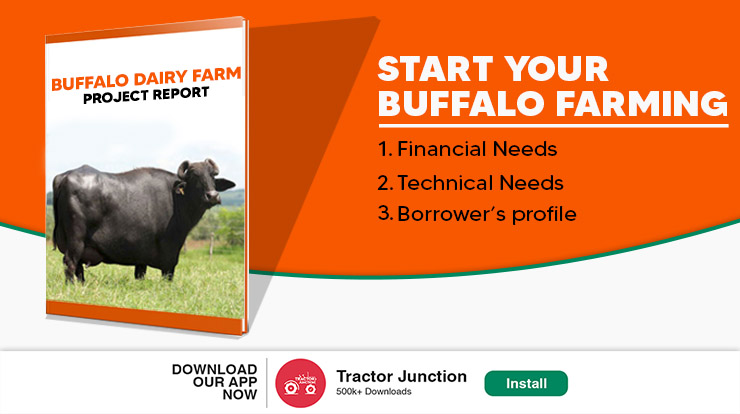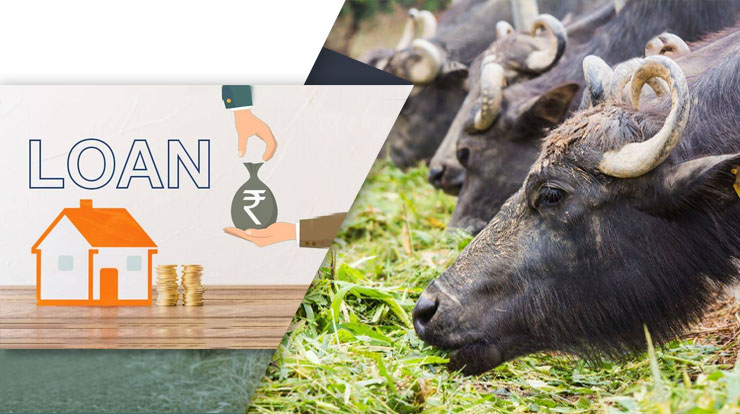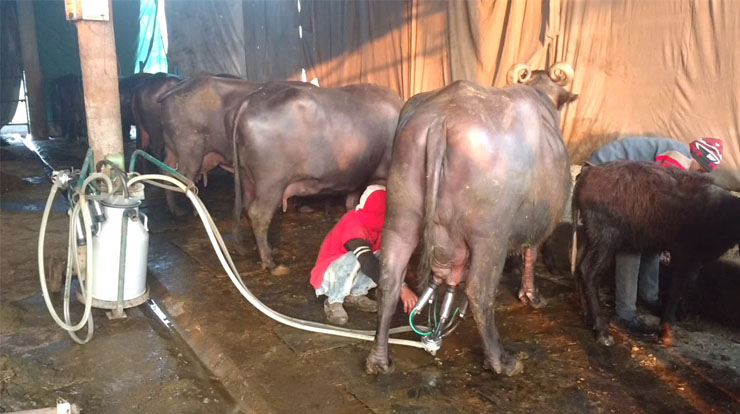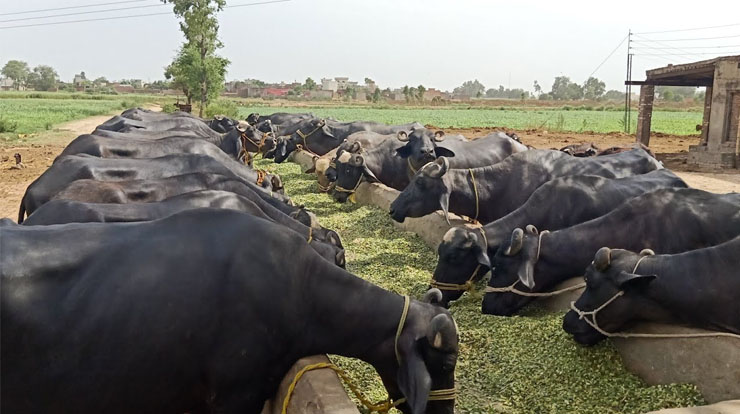

Dairy farming is an essential source of subsidiary income to small/marginal farmers and agricultural labourers. In addition to milk, manure from animals presents a good source of organic matter for increasing soil fertility and crop yields. The Gobar Gas from the waste is used as fuel for domestic objects and running engines for drawing water from the well. The surplus fodder and farming byproducts are gainfully used for feeding the animals. Bullocks supply almost all draught power for buffalo farm operations and transportation. Since agriculture is mostly periodic, there is a possibility of getting employment throughout the year for many persons through buffalo dairy farming. Thus, the dairy is also employed throughout the year. The primary beneficiaries of dairy businesses are small/marginal farmers and landless workers.
India is thriving, endowed with the largest livestock population in the world. It accounts for about 57.3% of the world’s buffalo population and 14.7% of the cattle population. Thus, there is an enormous scope/potential for increasing milk production by profitable Murrah buffalo farming. We will tell you all the buffalo farming tips in this buffalo farming project report. It can help you to start a buffalo farm.

For dairy projects with large outlays, detailed project reports will have to be made. The finance items would include capital asset items such as purchasing milch animals, construction of sheds, Equipment, etc. The feeding cost during the initial one/two months is capitalised and given as a term loan. Cost towards land improvement, digging, fencing of well, commissioning of diesel engine/pump set, essential servants’ quarters, godown, electricity connections, transport vehicle, milk processing facilities etc., can be considered for a loan.
A beneficiary can prepare the project report for a buffalo farm after consulting local technical persons of the State Animal Husbandry Department, DRDA, Dairy Co-operative Society / Union / Federation / commercial dairy farmers. If possible, the beneficiaries should also visit growing dairy farms and government/agricultural university / military dairy farms in the vicinity and discuss the profitability of dairy farming. Good practical training and expertise in the buffalo farming business will be highly desirable. If existing in the villages, the dairy co-operative societies would provide all supporting facilities, particularly for the marketing of fluid milk. The nearness of dairy farms to such a society, veterinary aid centre, artificial insemination centre should be ensured.
The project report for a dairy farm should detail the following information on technical, financial, and managerial aspects based on the type of unit and capacity.

( A ) Borrower’s profile:
The scheme so formulated should be presented to the nearest branch of the bank. The bank’s officer can support in preparing the plan or filling in the prescribed application form. The bank will then check the scheme for its technical feasibility and financial viability.
After ensuring financial viability and technical feasibility, the scheme is sanctioned by the bank. Then, the loan is disbursed in kind in 2 to 3 stages against the creation of specific assets such as the construction of buffalo shed, purchase of equipment and machinery, purchase of animals and recurring cost on purchase of feeds/fodders for the initial period of one/two months. Finally, the end-use of the funds is verified, and the bank does constant follow-up.
Outlay: The outlay of the scheme depends on the local circumstances, unit size and the elements included in the project. Prevailing market prices may be estimated to arrive at the outlay.
Margin Money: Margin depends on the class of the borrowers and ranges from 10 to 25%.
Interest Rate for an ultimate borrower: Banks can decide the interest rates within the general guidelines. However, for working out the economic viability and bankability of the model projects, we have assumed the interest rate as 12 % p.a.
Security: Security will be as per RBI guidelines issued from time to time.
Repayment period of loan: The repayment period depends upon the gross surplus in the scheme. The loan will be repaid in convenient monthly/quarterly instalments, usually within a period of five to seven years.
Insurance: The animals and capital assets may be insured annually or on a long term master policy, wherever applicable.

A model buffalo farming India project with 10 buffalo for dairy farming is given below. This indicates the applicable input and output costs and the parameters observed at the field level, which may be incorporated. Let’s begin with the buffalo farming information.
| Cost of buffaloes | 5,00,000 |
| Cost of transportation | 10,000 |
| Animal shed’s construction | 60,000 |
| Calf shed’s construction | 24,000 |
| Chaff cutter and |
| Type of Animal | Graded Murrah Buffalo |
| No. of Animals | 10 |
| No. of animals/batch | 5 |
| Murrah buffalo price (Rs./animal) | 50,000 |
| Transportation Cost/Animal | 1,000 |
| Cost of culled animal | 5,000 |
| Average Milk Yield (litre/day) | 10 |
| Cost of construction per sqft (Rs.) | 120 |
| Floor space (sqft) per adult animal | 50 |
| Floor space (sqft) per calf | 20 |
| Cost of chaff cutter (power-operated) (Rs.) | 50,000 |
| Cost of equipment per animal (Rs.) | 1,000 |
| Veterinary aid/animal/ year (Rs.) | 1,000 |
| Insurance premium (% per annum) | 5 |
| Concentrate feed quantity in one bag(kgs.) | 50 |
| Cost of green fodder (Rs./kg) | 1 |
| Cost of concentrate feed (Rs./kg) | 12 |
| Cost of dry fodder (Rs./kg) | 2 |
| Salary of labourer per month (Rs.) | 4,500 |
| No. of labourers | 1 |
| Electricity cost and water/animal/year (Rs.) | 150 |
| The selling price of milk/litre (Rs./litre) | 26 |
| The sale price of gunny bags (Rs.per bag) | 10 |
| Margin (%) | 25 |
| Rate of interest (%) | 12 |
| Repayment period (years) | 5 |
| Lactation days | 270 |
| Dry days | 150 |
ii) Total Concentrate Feed Consumed (Kgs.)
| Year | Lactation | Dry | Total | No. of Gunny Bags |
| Year 1 | 8,250 | 300 | 8,550 | 171 |
| Year 2 | 11,250 | 2,700 | 13,950 | 279 |
| Year 3 | 11,250 | 2,700 | 13,950 | 279 |
| Year 4 | 12,000 | 2,400 | 14,400 | 288 |
| Year 5 | 12,000 | 2,400 | 14,400 | 288 |
iii) Lactation Chart in Project Report for a Dairy Farm / Animal
| Year | I Batch | II Batch | ||
| Lactation days | Dry days | Lactation | ||
| Particulars | Years | ||||
| 1st | 2nd | 3rd | 4th | 5th | |
| Sale of Milk | 4,29,000 | 5,85,000 | 5,85,000 | 5,85,000 | 6,24,000 |
| Sale of Gunny bags | 1,710 | 2,790 | 2,790 | 2,880 | 2,880 |
| Total | 4,30,710 | 5,87,790 | 5,87,790 | 5,87,880 | 6,26,880 |
| Cost of feeding during | |||||
| 1st | 2nd | 3rd | 4th | 5th |
| Capital |
Profit margin calculation in dairy farming business = Total Earnings – Total Cost = 8,60,560 – 4,75,340 = 3,85,220
Total Earnings of 5 years = 2,15,140 + 2,15,140 + 2,15,140 + 2,15,140 = 8,60,560
Note: The information provided is for learning purposes only, it may change over time.
Que. Is Buffalo Farming Profitable Business?
Ans. Yes, buffalo farming is a very profitable business.
Que. Which Buffalo is Best for Dairy Farming?
Ans. Murrah buffalo is best for dairy farming.
Que. What is The Best Food for Buffalo?
Ans. Fodder is the best food for buffalo.